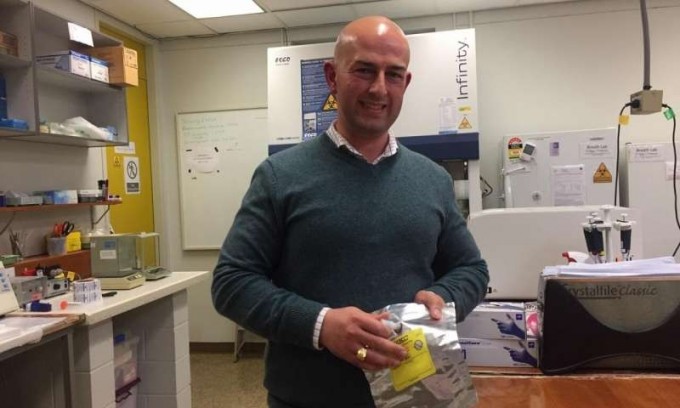

最新资讯
- 01 | 中科院提出质子提取反应质谱PTR-MS新技术
- 02 | 小肠污染综合征的氢呼气试验(SIBO)
- 03 | CO呼气试验在糖尿病血糖监控效果精准评估中的最新研究进展
- 04 | 以色列新型仪器用呼气成分诊断疾病 准确率超86%
- 05 | 澳洲科学家尝试“开创性”疟疾呼吸试验
- 06 | 早期肝病的呼气试验
- 07 | 俄罗斯专家找到了呼气测血糖的新方法
- 08 | 硅谷黑科技亮相滨海中关村 实现呼气检测癌症
A promising breath-test for cancer

The global quest to use a person's breath analysis for rapid, inexpensive and accurate early-stage testing for cancer and other diseases has taken a leap forward.
In a new paper in the British Journal of Cancer, Flinders University researchers have reported significant progress in developing a method to test exhaled breath profiles which accurately differentiate head and neck cancer from non-cancer patients.
The Australian researchers collected breath samples from 181 patients suspected of having early-stage head and neck squamous cell carcinoma (HNSCC) before any treatment began.
"We sought to determine the diagnostic accuracy of breath analysis as a non-invasive test for detecting head and neck cancer, which in time may result in a simple method to improve treatment outcomes and patient morbidity," says lead researchers Dr. Roger Yazbek and Associate Professor Eng Ooi.
Worldwide, head and neck cancer accounts for 6% of all cancers, killing more than 300,000 people per year globally. Tobacco, alcohol and poor oral hygiene are known major risk factors for this cancer.
A surge in human papilloma virus (HPV)-associated head and neck cancers is seeing these cancers affecting a much younger population, the researchers say.
Current therapies are effective at treating early-stage disease, however late-stage presentations are common, and often associated with poor prognosis and high treatment-related morbidity.
In the Australian study, a selected ion flow-tube mass spectrometer was used to analyze breath for volatile organic compounds. Using statistical modeling, the Flinders researchers were able to develop a breath test that could differentiate cancer and control (benign disease) patients, with an average sensitivity and specificity of 85%.
Diagnosis was confirmed by analysis of tissue biopsies.
"With these strong results, we hope to trial the method in primary care settings, such as GP clinics, to further develop its use in early-stage screening for HNSCC in the community," says co-lead author Dr. Nuwan Dharmawardana.




